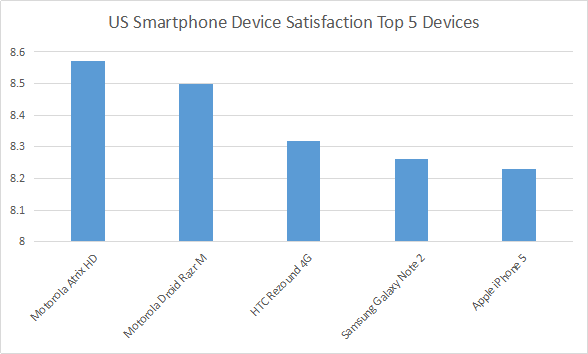1. Akash scored 73 marks in subject A. He scored 56% marks in subject B and X marks in subject C. Maximum marks in each subject were 150. The overall percentage marks obtained by Akash in the three subjects together were 54%. How many marks did he scored in subject C
Show Similar Question And Answers
 Source: 92.825 US mobile users, July 2012 - January 2013
Fortunately, those questions were answered by OnDevice Research’s representative. He explained that the survey was conducted on mobile web where the survey software could detect the taker’s device and since user’s rate their satisfaction levels on a 1 to 10 scale, thanks to the Nexus device, Google was included.If you analyze the three reports above, which of the following statements would be the best inference?
Source: 92.825 US mobile users, July 2012 - January 2013
Fortunately, those questions were answered by OnDevice Research’s representative. He explained that the survey was conducted on mobile web where the survey software could detect the taker’s device and since user’s rate their satisfaction levels on a 1 to 10 scale, thanks to the Nexus device, Google was included.If you analyze the three reports above, which of the following statements would be the best inference? Powered By:Omega Web Solutions
Powered By:Omega Web Solutions
Overall percentage = 54%
$$frac{A + B + C}{3}$$ = 54%
$$frac{48.66 + 56 + C}{3}$$ = 54%
C = 57.34%
Marks = 57.34% of 150 = 86